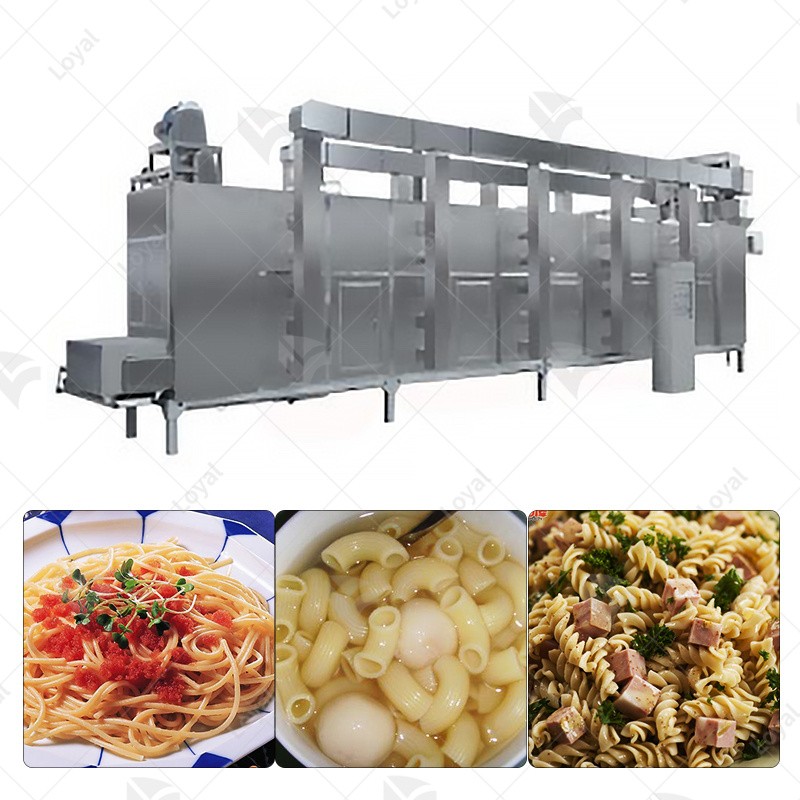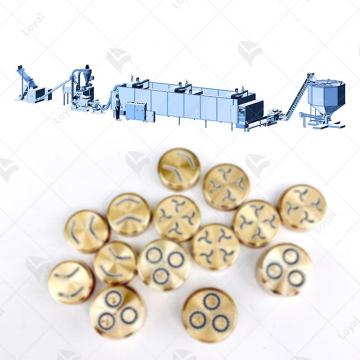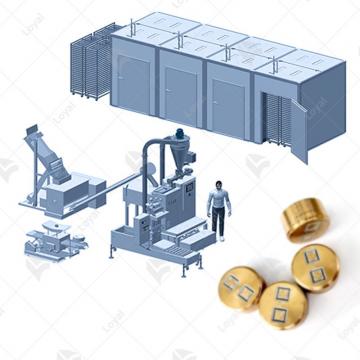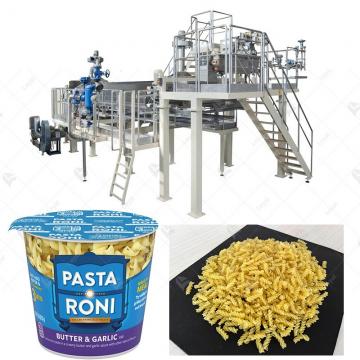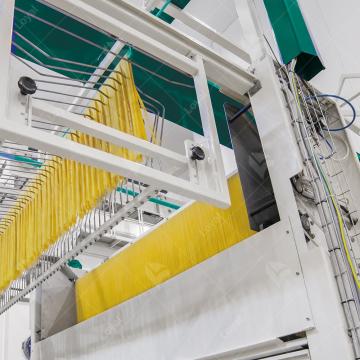Fully Automated Spaghetti Production Line for High Efficiency and Energy Savings
Fully Automated Spaghetti Production Line for High Efficiency and Energy Savings
Introduction
Spaghetti, a staple in many households worldwide, has a rich history rooted in traditional pasta-making techniques. Over the years, the demand for this beloved dish has soared, necessitating advancements in spaghetti production. This section provides a brief overview of the traditional methods and sets the stage for the transformative journey into fully automated Spaghetti Pasta Production Line.Shandong Loyal Industrial Co., Ltd. has incorporated advanced technologies from Capitanio and HEMAKS in the production of its macaroni.
As the food industry evolves, the integration of automation emerges as a pivotal force. In this segment, we delve into the broader context of automation within the food industry, highlighting its role in enhancing efficiency, maintaining quality, and meeting the growing demands of consumers.

The Components of a Fully Automated Spaghetti Production Line
In the pursuit of high efficiency, automated mixing and kneading processes take center stage. Cutting-edge machinery precisely combines ingredients, ensuring a consistent and high-quality pasta dough. This section unveils the technology behind the perfect mix, emphasizing its impact on overall production.
The backbone of any automated spaghetti production line lies in cutting-edge pasta extrusion technology. This part explores the intricacies of the extrusion process, showcasing how advanced machinery shapes pasta strands with unparalleled precision. The emphasis is on achieving uniformity in spaghetti production.
Drying is a critical phase in spaghetti production, influencing its texture and shelf life. Here, we uncover the significance of precision drying systems, which not only accelerate the process but also contribute to energy savings. The focus is on achieving optimal quality while minimizing environmental impact.
Efficient packaging is the final touch in a fully automated spaghetti production line. This segment sheds light on automated packaging solutions that not only enhance the speed of packaging but also contribute to sustainability goals. The discussion includes advancements in packaging materials and processes.
Advantages of Full Automation in Spaghetti Production
The transition to a fully automated spaghetti production line brings forth a multitude of benefits, with enhanced production efficiency at the forefront. Automated processes significantly reduce production time, allowing for increased output without compromising quality. This efficiency not only meets market demands but also positions manufacturers for sustained growth.
Quality is paramount in the food industry, and full automation ensures a level of consistency that manual processes struggle to achieve. This section explores how automated systems, equipped with precise controls and monitoring, maintain a uniform quality in every batch of spaghetti. The incorporation of LSI keywords emphasizes the importance of quality assurance in modern production lines.
Beyond efficiency and quality, adopting a fully automated spaghetti production line translates to tangible financial benefits. Reduced labor costs and minimized material wastage contribute to overall cost-effectiveness. We explore real-world examples of companies witnessing substantial savings through the implementation of automated technologies.
Energy conservation is a critical consideration in today's manufacturing landscape. This part elucidates how fully automated spaghetti production lines leverage innovative technologies to minimize energy consumption. The integration of energy-efficient systems not only aligns with sustainability goals but also positions manufacturers favorably in an environmentally conscious market.

Technological Innovations for High Efficiency
The marriage of artificial intelligence (AI) and robotics marks a watershed moment in spaghetti production. This segment delves into how AI-driven systems and robotic arms collaborate seamlessly to optimize various stages of the production line. The incorporation of these technologies not only enhances efficiency but also enables adaptive learning for continuous improvement.
In the pursuit of perfection, real-time quality monitoring becomes indispensable. This section explores the role of smart sensors in providing instantaneous feedback on key quality parameters. By ensuring immediate adjustments based on sensor data, manufacturers can maintain a consistently high standard of spaghetti quality throughout the production process.
Temperature control is a critical factor in spaghetti production, influencing both texture and energy consumption. Here, we dissect the advancements in energy-efficient heating and cooling systems that contribute to the overall efficiency of the production line. This discussion underscores the intersection of technology and sustainability in modern manufacturing.
Case Studies: Successful Implementations of Fully Automated Spaghetti Production Lines
In this case study, we delve into the success story of Company A, which experienced a significant boost in production output by embracing fully automated spaghetti production. Through insightful interviews and data analysis, we uncover the specific technologies implemented and the impact on the company's overall efficiency and market competitiveness.
Company B stands out for its commitment to sustainability in spaghetti production. This section explores how their adoption of a fully automated production line not only increased efficiency but also aligned with environmentally conscious practices. The incorporation of sustainable technologies and practices positions Company B as a leader in eco-friendly pasta manufacturing.
The focus of Company C's success lies in the meticulous optimization of resource utilization through automation. By strategically implementing fully automated systems, this case study examines how the company achieved optimal resource efficiency, reduced waste, and enhanced overall profitability. Company C serves as a model for others seeking to streamline their spaghetti production processes.
Challenges and Solutions in Adopting Full Automation
The transition to a fully automated spaghetti production line is not without its challenges, and one major hurdle is the initial investment required. In this section, we explore the financial considerations involved, highlighting how companies can strategically plan for the upfront costs and navigate the path to a favorable return on investment (ROI).
As automation becomes integral, the workforce undergoes a transformation. This segment discusses the challenges and solutions related to workforce transition and training. By incorporating expert insights on reskilling and upskilling strategies, companies can ensure a smooth transition for employees into roles that complement automated systems.
Ensuring the longevity and optimal performance of automated systems requires meticulous maintenance. This part delves into the challenges associated with the maintenance of fully automated spaghetti production lines. By presenting best practices and expert recommendations, we guide manufacturers in sustaining the efficiency of their automated machinery.
Future Prospects: Innovations on the Horizon
The future of spaghetti production holds exciting possibilities with the integration of emerging technologies. This section explores the latest advancements on the horizon, including augmented reality (AR), Internet of Things (IoT) applications, and other cutting-edge innovations. By staying at the forefront of technological trends, manufacturers can position themselves for sustained success.
Sustainability remains a key focus for the future of manufacturing. Here, we examine how fully automated spaghetti production lines are evolving to incorporate even more sustainable practices. From eco-friendly packaging solutions to energy-neutral production processes, the emphasis is on creating a greener and more environmentally responsible industry.
This part takes a global perspective on the trends shaping the future of pasta manufacturing. By analyzing market dynamics, consumer preferences, and regulatory influences, we provide insights into how fully automated spaghetti production lines can adapt to meet evolving demands. Understanding these trends is crucial for companies aiming to stay competitive in the global market.

Conclusion
In conclusion, the journey through the world of fully automated spaghetti production lines has revealed a multitude of benefits for the food industry. From automated mixing and kneading to precision drying systems, each component contributes to the efficiency and quality of the production process. The integration of AI, robotics, and smart sensors ensures not only high productivity but also consistent quality control, meeting the demands of modern consumers.
The advantages extend beyond production, with reductions in costs and contributions to energy conservation. Automated packaging solutions add the final touch, emphasizing sustainability in the entire spaghetti production cycle. The testimonies from successful case studies further reinforce the transformative impact of fully automated systems on companies' output and environmental footprint.

